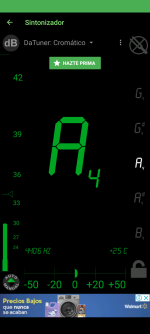Rafael
Member
I recently bought a petosa sm 300 accordion (3/4 LMM). However, when reviewing its tuning and tremolo through various applications, it is not clear to me how to interpret the results. On the one hand, when you open the bellows the tuning appears at 440. 6 Hz and 2. 5 cents. On the other hand, when closing, the tuning is 441.8 hz and 7.1 cents. Is this normal? Shouldn't it be the same tuning and cents opening and closing? On the other hand, I want to have a warmer sound, so I'm thinking of asking the tuner to go up to 12 cents. Do you think it's a good tremolo for Latin American, European and American popular music? Should I ask the tuner to do something about the hz variation when opening and closing? Thank you very much for your feedback


